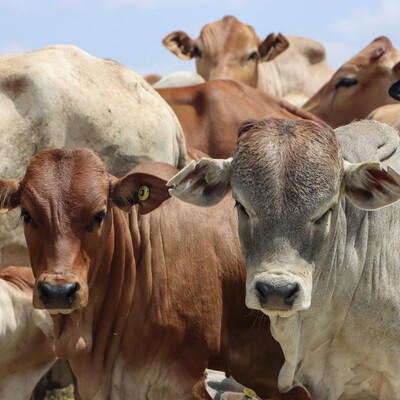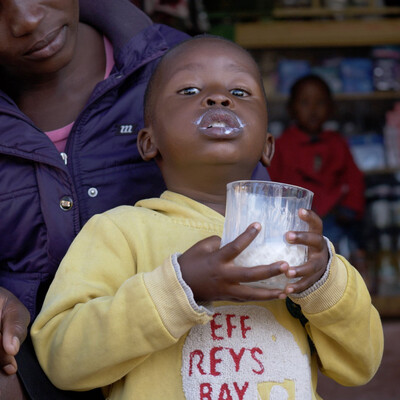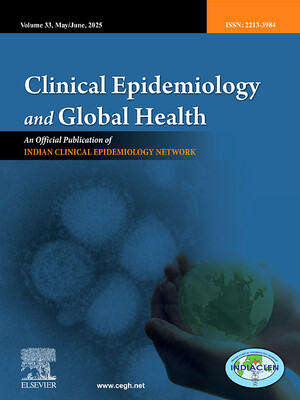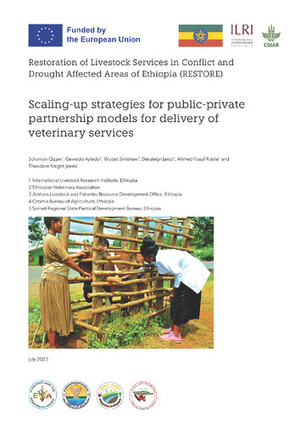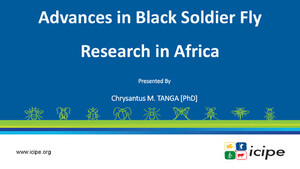
Assessing the role of cooperatives in promoting adoption of livestock vaccines in Kenya
Researchers in the Policies Institutions and Livelihoods (PIL) program of the International Livestock Research Institute (ILRI) have had to adopt new ways of conducting surveys in a bid to comply with the COVID-19 pandemic-related travel restrictions in Kenya. Julius Githinji, a research associate in the PIL program, says he has resorted to conducting phone interview surveys and using online messaging and communication platforms to complete research projects on time. Githinji is currently assessing ways of working with dairy cooperatives in Kenya to promote the adoption of livestock vaccines by members.
The ‘Demand and liquidity coordination to foster the adoption for livestock vaccinations: an experiment with smallholder dairy cooperatives in Kenya' study is seeking to promote the use of the East Coast fever vaccine by improving access using demand aggregation measures and the introduction of a 'check-off system'.
East Coast fever is a deadly cattle disease that is transmitted by ticks. Without effective tick control, calf mortality can be as high as 100%; but tick control is expensive for most poor smallholder farmers. The vaccine costs between KES1,000–1,500 (USD9–14) per cow.
The demand aggregation measures target farmers who are already organized into cooperatives and who have already invested in dairy cattle for milk production. It is anticipated that the check-off system will assist the farmers who are cash-constrained in paying for the vaccine. This is because the East Coast fever vaccine is packaged into batches of 40, making it unrealistic for one farmer to purchase unless they have up to 40 cows to vaccinate. By targeting farmers who are already in cooperatives, it is possible to identify farmers in need of the vaccine at any given time and then order for the vaccines, which must be kept frozen using liquid nitrogen and once thawed, the entire batch used within four hours.
In Kenya, milk is collected at cooperative facilities where it is processed and sold into value chains. These value chains provide an opportunity for smallholder dairy farmers to receive a stream of income.
Githinji says a questionnaire has been developed to aid in screening, through phone interviews, close to185 cooperatives based mainly in the South Rift area but that will be expanded into other areas as necessary to achieve a sample size of 80 cooperatives. The questionnaire is being distributed to the cooperative leaders using the WhatsApp messaging platform and email; then follow up calls are made to clarify what is expected of them. 'The exercise also involves making follow up calls to the cooperative leaders to collect the information on the number of members, vaccination rates, presence of check-off systems and other aspects of cooperative functioning. The identified cooperatives will take part in a baseline survey that will further analyse cattle health, milk production and investment decisions among others,' he says.
Given the length of the questionnaire and technical difficulties that cooperative leaders may experience in filling it, Githinji and his team not only have to make several follow up calls to offer guidance on the data required but also need to avail adequate time for the leaders to gather the information before making subsequent calls to collate the data. Besides challenges with poor connectivity, issues of trust also arise in cases where there is no prior acquaintance with the dairy cooperative officials, thus slowing down the process.
The data gathered will be used to inform the facilitation of mass vaccination events with cooperatives and vaccinators. It is anticipated that vaccinators will travel to the local villages in the catchment areas of identified dairy cooperatives and vaccinate large numbers of cattle simultaneously. Such interventions will alleviate several barriers such as limited possibilities of access to the East Coast fever vaccine by individual farmers and lessening of costs that would be incurred in organizing such events by cooperatives.
Samuel Rono the director of livestock in Nandi county welcomes the project noting that 'currently, the county does not have the kind of data being collected under the project. I believe this would go a long way in informing policy and helping the county to better prioritize its resources and efforts in livestock production'.
The East Coast fever vaccine is produced in labs outside Kenya, and the costs of administering the vaccine on farms are significant. The proposed mitigation measure of setting up a check-off system for vaccinations in the collaborating cooperatives is also practical because these systems already exist in many cooperatives. They involve farmers setting aside some portion of their revenue from milk sales towards some other investment using an auto-deduction agreement with the cooperative.
Farmers will be informed about an upcoming East Coast fever vaccination event several months in advance. They will also be given the option of joining the check-off system, thus allowing them to accumulate savings for the vaccination.







